wdolson
Posts: 10398
Joined: 6/28/2006
From: Near Portland, OR
Status: offline

|
quote:
ORIGINAL: Leandros
There are also the examples where different editions of the same airframe could suit different roles. I'm thinking of the P-36/P-40. The P-36 could turn and climb with the Zero - it was a terrific diver, too - actually set a world dive speed record during its trial for the French Air force. The P-40 could do other things, like escape from the Zero.... ...Imagine a fighter group with squadrons consisting of those two types. I know which one I would have flown. With inexperienced pilots on rough fighter strips the nose-heavy P-40's created a lot of accidents, too. ...Imagine a fighter group with squadrons consisting of those two types. I know which one I would have flown. With inexperienced pilots on rough fighter strips the nose-heavy P-40's created a lot of accidents, too.
One thing that isn't mentioned here are the politics of defense production. In my example the AAC wanted a fighter with an inline engine, the Allison V-12, they had been involved in its development (and inline was sexy), while radials where in short supply for the bomber production. Flown economically, the P-36 had a better range than the P-40. Alas, it was never flown with drop tanks, like the Zero and P-40's. Please correct me if I am wrong. For some reason, the Navy didn't seem to have trouble getting enough Twin Wasps (the Wildcat).
The P-36A as used by the USAAC had no armor or self sealing tanks, it also only had a range of 825 miles. The P-40B which also had no armor had a range of 730 miles, but with minimum cruise settings, the plane was capable of 1230 miles. The range of the P-40E with armor and was the first version considered war ready had a range without a drop tank of 650 miles, 850 miles with one. War experience showed that while dog fighting ability fit the romantic notions of knights of the sky, the faster fighter could usually dictate the conditions of the fight and usually won. Good, but not spectacular maneuverability with the capability of high speed was the combination that made for the best fighter.
If given a choice I'd take a P-40E over a P-36A. It is more heavily armed, faster, same range with a drop tank, has armor and self sealing tanks. Overall the P-40E was prepared for combat in the 1940s and the P-36A wasn't. I know you like the P-36, and it was a good plane for its time, but it was obsolete by the US entry into the war.
quote:
I have tried to find out whether the AAC P-36's were ever upgraded with the latest, very reliable, 1200 hp. P&W Twin Wasp engine for the USAAC. This was the final version ordered by most foreign countries as the war started. Instead, most, also the French ones used as the Mohawk by the British (and the Dutch), were delivered with the Wright Cyclone, which was giving much trouble.
Even the initial versions, with the lower-powered Twin Wasps, did good service for the French in 1939 and 1940. That said, the French fighter pilot corps in that period had, in average, good training background.
While the US aircraft manufacturers were making a lot of planes for export, domestic military use got first dibs on the engines, so the Wildcat had priority for the twin wasp engines. The problems with the export aircraft engines was not so much that a lot of exported aircraft had refurbished engines that were a bit knackered. This is especially true of the export Buffaloes sent to the DEI and I believe in RAF service too.
quote:
An example of the problems with using planes originally built for land use on carriers was the Buffalo. Its landing gear couldn't take it.
Fred
I don't know where you got that information. As far as I know the USN has never adopted a land based aircraft for carrier use. The Buffalo was the winner of a competition between Grumman and Brewster for the next gen carrier fighter in 1935. Grumman entered the XF4F-1 which was a biplane and Brewster had a cutting edge monoplane. After losing the competition Grumman redesigned their entry as a monoplane and got a contingency contract for a few aircraft for evaluation. Brewster was a horribly run company and even before the war was the subject of some corruption scandals. My parents remembered the stories. The Buffalo program ran into a lot of troubles and the landing gear did turn out to be too weak for carrier use. The USN decided to drop the Buffalo after buying 162 of them and in 1941 placed an order for Wildcats with Grumman.
To try and get their money out of the airframe Brewster sold Buffalos overseas.
Brewster was such a bad company they actually went out of business in the middle of the war. The US government took over their factory and ran it until the end of the war. They also competed in the big 1938 carrier plane competition which produced the Corsair, the TBF, and the SB2C Helldiver. Brewster's entry was the SB2A Buccaneer. The Navy had the 2nd place entry in the dive bomber and torpedo bomber category built as a back up in case the primary aircraft ran into trouble. When the Helldiver had horrible teething problems they went to the back up from Brewster and found it to be dramatically worse. They tried to fob some off on the British, but while they took delivery of a few hundred, none saw combat.
After failing to build their own designs, they got a contract to build Corsairs under contract along with Goodyear. Goodyear's Corsairs were just as good at the Vought versions and many survivors around today are actually Goodyear FG-1s. The Brewster versions were so terrible none were considered combat ready and all were retained for training duty. As soon as they could the USN/ISMC scrapped every one of them. One exists after being pulled out of a lake a couple of years ago.
Bill
_____________________________
WitP AE - Test team lead, programmer  |
 Printable Version
Printable Version





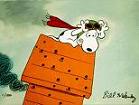


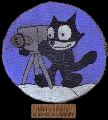

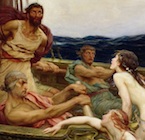

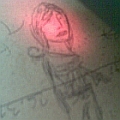
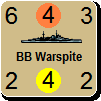
 Imagine if, instead of facing the Hurricane and Spitfire in the Battle of Britain, they faced a sort of Hurricane/Swordfish/Skua/Defiant/Spitfire/Albacore/Battle/Blenheim/Lysander all-in-one variant?
Imagine if, instead of facing the Hurricane and Spitfire in the Battle of Britain, they faced a sort of Hurricane/Swordfish/Skua/Defiant/Spitfire/Albacore/Battle/Blenheim/Lysander all-in-one variant? 



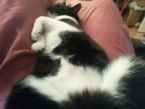
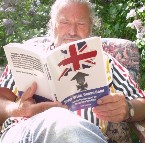
 ...Imagine a fighter group with squadrons consisting of those two types. I know which one I would have flown. With inexperienced pilots on rough fighter strips the nose-heavy P-40's created a lot of accidents, too.
...Imagine a fighter group with squadrons consisting of those two types. I know which one I would have flown. With inexperienced pilots on rough fighter strips the nose-heavy P-40's created a lot of accidents, too. 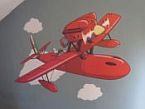
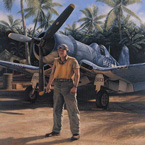




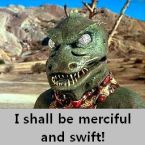


 New Messages
New Messages No New Messages
No New Messages Hot Topic w/ New Messages
Hot Topic w/ New Messages Hot Topic w/o New Messages
Hot Topic w/o New Messages Locked w/ New Messages
Locked w/ New Messages Locked w/o New Messages
Locked w/o New Messages Post New Thread
Post New Thread